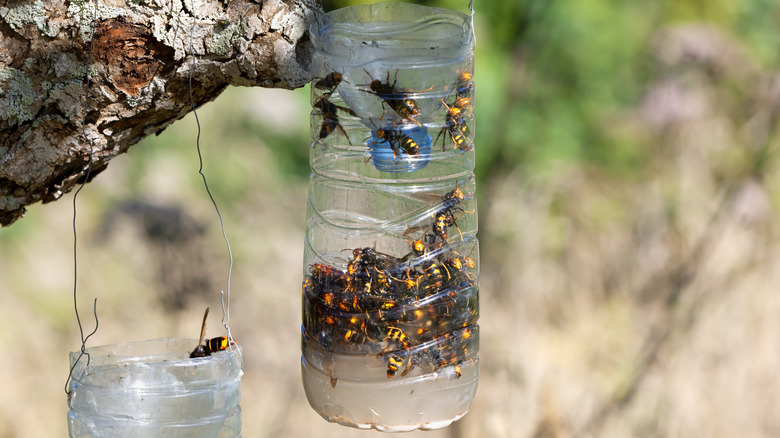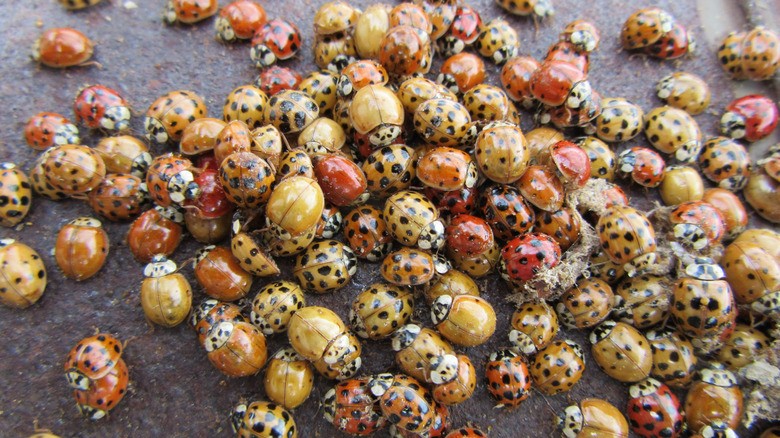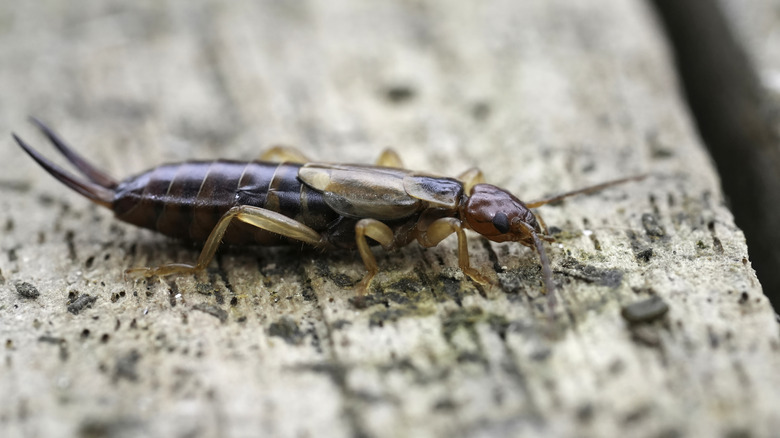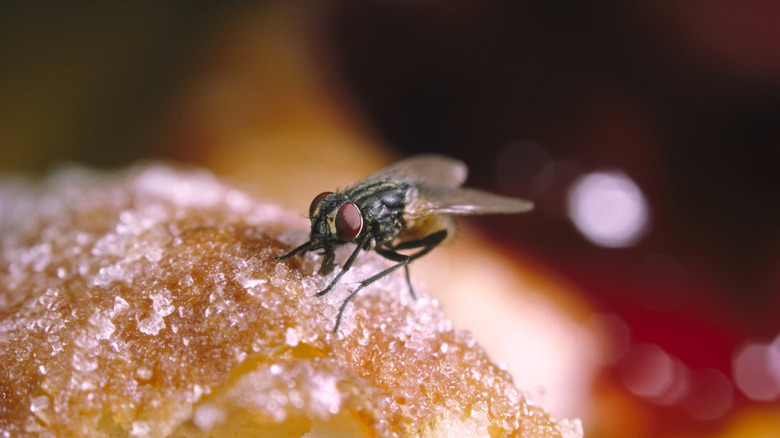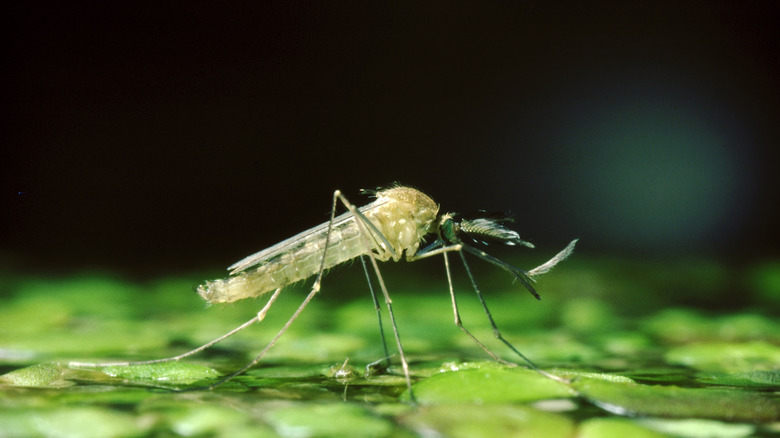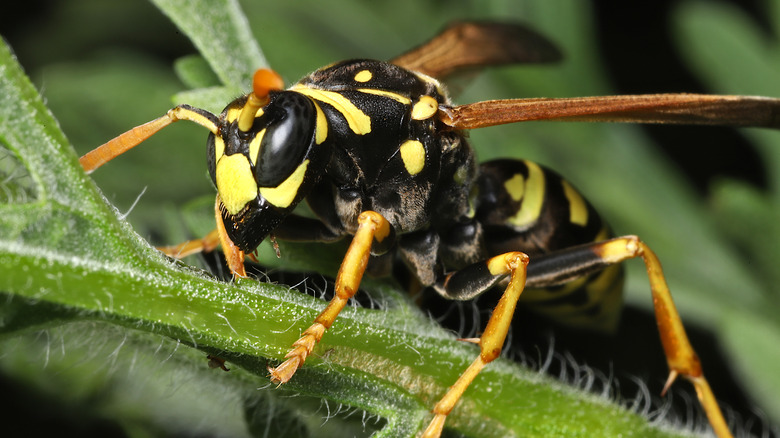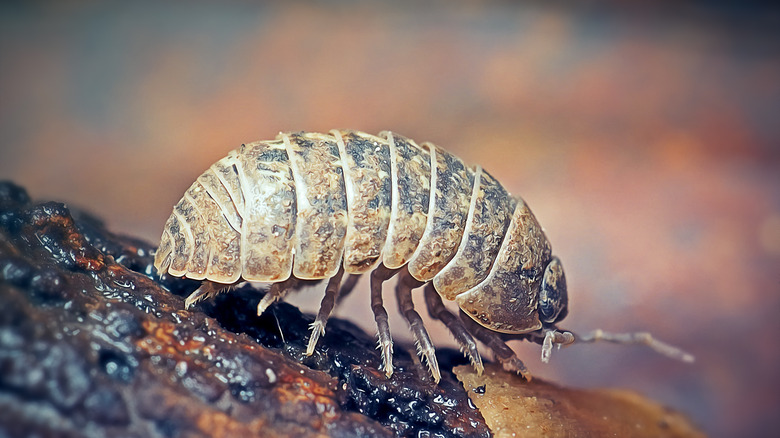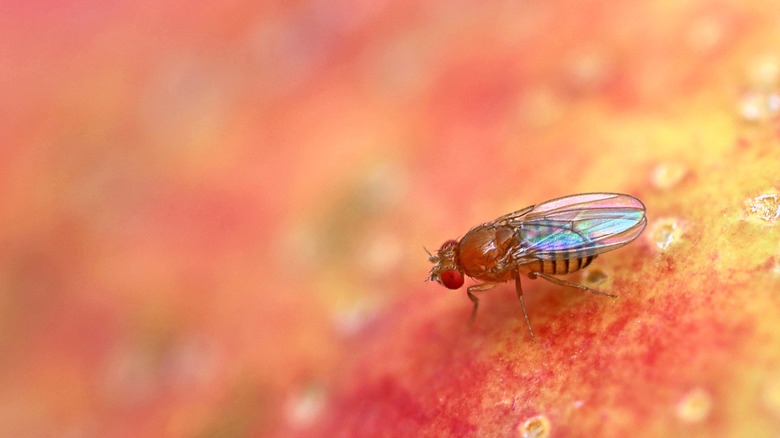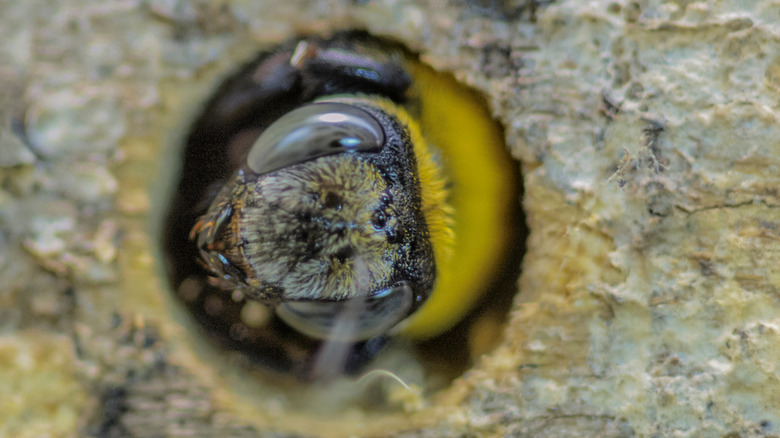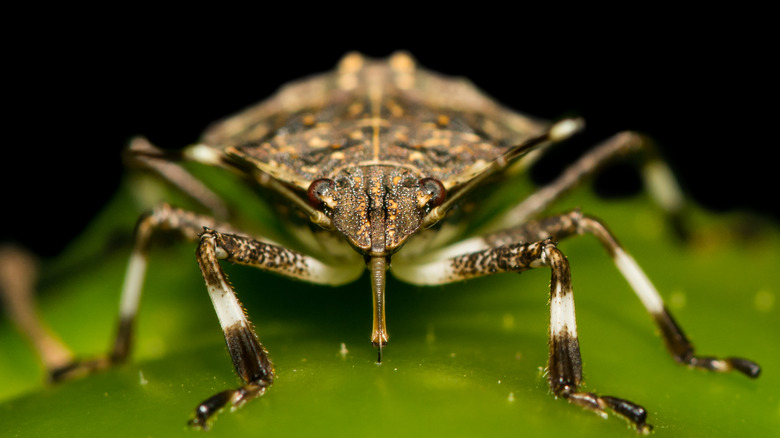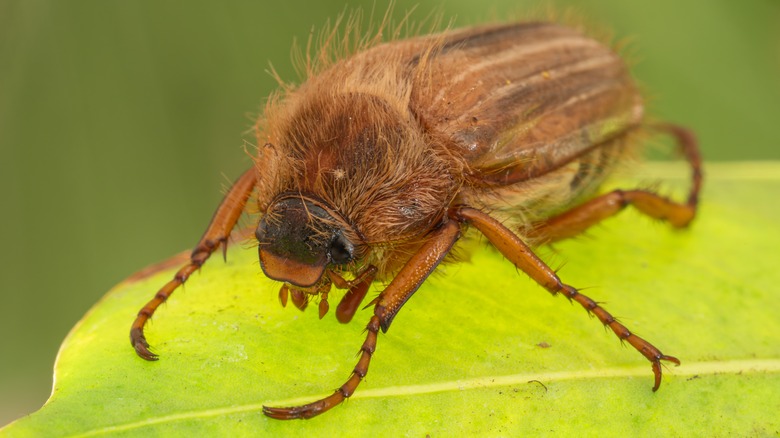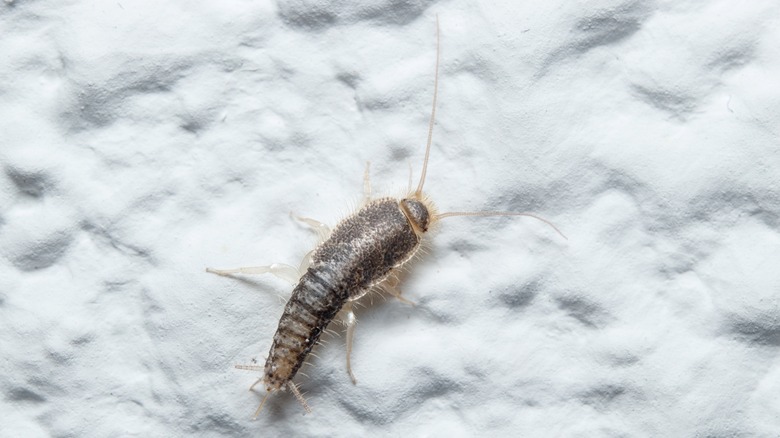11 DIY Bug Traps To Keep The Creepy Crawlies Out Of Your Home & Garden
We may receive a commission on purchases made from links.
Insects can be a major nuisance in the home and garden. However, catching or eliminating them with commercial insecticides is expensive and subjects your household to toxic chemicals. Likewise, insect traps sold by pest exterminators and online marketplaces can add up to a sizeable new expense if you replace them often. Luckily, you can make your own insect traps that lure and dispatch the pests with items commonly found at home.
Constructing an effective insect trap boils down to two key tasks. First, you must find a powerful lure to draw the pests to the device and distract them from, well, whatever they're munching on in your home. And crucially, the device must deny the pests a means of egress — once they're in the trap, only you can take them out. Research on insect behavior gives us useful insights about suitable baits. Meanwhile, items like bottles, jars, and plain old water can be used to thwart your winged inmates' escape.
Our lineup of DIY traps below will help you do away with most common bugs indoors and outside your home. You can make all of these traps using everyday objects and foods — none of the components below are toxic to humans or pets. Best of all, crafting these improvised traps demands little time or skill.
A light and a plastic bottle are all you need to trap Asian lady beetles
You can use a simple light trap to catch and remove Asian lady beetles — ladybugs' stinky cousins — from your homes. Asian lady beetles (Harmonia axyridis) resemble common ladybugs in appearance, but the secretions they produce to deter predators all but negate their cuteness. Their defensive discharge smells awful and leaves stains on surfaces where these bugs congregate — generally around sources of light inside your home.
Luckily, this light-seeking behavior provides a clue on how to oust the bugs effectively without triggering volleys of the noxious bug juice. Since light is these beetles' biggest draw, a cleverly-designed trap lures the insects to an illuminant, then deprives them of an exit. You can do this with a DIY trap comprising a plastic bottle and a source of light. To create the trap, start by cutting the plastic bottle in half with a sharp knife. Next, place a small LED light (like these ones from Amazon) at the bottom of the bottle. Finally, insert the bottle top part mouth-down into the bottom — this funnel-shaped contraption will make for an easy entrance and an impossible exit. Now, you can leave the trap in a place where it will serve as the primary source of light. Once the trap has collected enough lady beetle prisoners, release the pesky insects outdoors.
You can trap earwigs using oil and soy sauce
A makeshift trap featuring oil and soy sauce is a rudimentary yet effective device for ridding your home and garden of earwigs. Contrary to popular belief, earwigs pose no major danger to humans — they don't eat our brains, they don't suck blood, nor do they use their pincers to attack us unless threatened. That said, they're a menace to your garden because plants (especially seedlings and leaves) are their preferred snack. But, aside from plants, these bugs also have a love affair with soy sauce. This condiment is such a potent siren call for earwigs that you can easily use it to your advantage as a lure.
To fashion your DIY earwig trap, you'll need a medium-sized container, such as a flower pot, bowl, or old Tupperware. Whatever your choice is, don't plan on storing food in it later — trust us, you won't want to. Once you've found a suitable vessel, pour some soy sauce into it — about a half-inch's worth should suffice. Add a tablespoon or two of vegetable oil to break the surface tension and drown the earwigs. Finally, bury the trap in the garden so that the opening is flush with the soil, and wait for the earwigs to meet their end in your makeshift trap. Check the trap regularly, and discard the dead earwigs, then refill the container with soy sauce and oil. Continue the process until the infestation ends.
Use a plastic bottle with effective bait to catch flies
An altered plastic bottle filled with irresistible bait makes for an easy homemade fly trap. Flies are attracted to sweetened water because it resembles nectar. Likewise, vinegar's odor is similar to that of rotting fruit — another fly favorite. If you want to prepare a powerful fly lure, water with dissolved sugar and a bit of vinegar should do the trick. However, if you're out to catch flesh flies, a protein-based lure will work best, since rotting meat is flesh flies' preferred snack. Food scraps like meat or fish are excellent options for drawing this fly species to your trap.
You can craft this fly trap using any empty plastic bottle. Start by cutting off the top, then turn it upside-down, and insert it into the bottom half like a funnel. Next, place the bait into the trap. If your bait isn't water-based (for example, if you're using meat to attract flesh flies), you'll have to add water to drown the pests. A bit of dish soap will help dispatch the flies quickly by disrupting the water's surface tension and limiting the insects' ability to float. Once you've made the trap, situate it in a place where the flies like to gather. Then, check the trap periodically and dispose of the dead insects.
Rid your home of mosquitoes with a soapy water trap
An open container filled with soapy water is an effective death trap for mosquitoes. The principle behind this DIY trap is quite simple — it leverages mosquitoes' preference for being close to a water source. Water serves as a breeding ground for mosquitoes. Females deposit their eggs in water, and the larvae spend their early days scouring their aquatic environment for nutrients. Mosquitoes also thrive in a moist, humid setting, afforded by a nearby water body. However, these troublesome insects don't need a lot of water to thrive and breed. Even a tiny water source acts as a magnet for these pests, so you don't need large tubs or buckets to create this trap.
To get started, find a few medium-sized bowls and fill them with water. Add some liquid soap to the water, and mix the solution thoroughly. The soap will keep the mosquitoes from floating on the water's surface and cause them to drown quickly. You can place the bowls in rooms where mosquitoes are present and let the water do its magic. In the garden, you can use the same approach. However, it's best to place the traps away from where you'd normally spend your time — you don't want to entice the pests with a potential blood meal. If you have a water feature outdoors, it's likely attracting mosquitoes already, so just add some soap to it to kill the insects and their larvae.
A makeshift hanging trap will keep your patio wasp-free when you dine outdoors
Once again, the trusty old plastic bottle can serve as a simple yet functional trap — this time for wasps. However, you'll need to choose the bait wisely, since wasps' nutrient needs differ depending on the season. Wasps' diet comprises mostly protein in the first half of the year. During spring and the beginning of summer, baits such as scraps of meat, bones, or even milk work well. Meanwhile, the end of the summer triggers a dietary change in wasps. As the warm weather winds down and ripe fruits become available in abundance, wasps start to favor sugary foods. During this part of the year, they're drawn to sweeter scents, so overripe fruit, syrups, and sugar-sweetened water make ideal bait choices.
Create your wasp prison by turning a plastic bottle into a funnel-shaped trap. Cut off the bottle's top, and then insert it into the bottom upside down. Puncture two small holes on opposing edges of the bottom's rim and connect one end of a string to each of the two holes. Next, pour the seasonally-appropriate lure into the bottle, and set your trap. You can suspend these traps from tree branches in your orchard, from beams in your gazebo, or in any other place where wasps are a major nuisance. Note that it's best to set wasp traps in the spring instead of waiting for late summer when the pests become more bothersome. Getting the traps ready early in the season disrupts the wasps' breeding cycle and keeps their numbers low.
Potatoes make the perfect trap for pill bugs
A potato is the sole component of this formidable pill bug trap. Pill bugs (also known as "rolly pollies") are among the least harmful insects you'll find in your garden. They will occasionally feast on the roots and leaves of your garden plants, but decaying matter is their most beloved meal. To prevent these insects from wreaking havoc on your plants, you can distract them with a trap made entirely of their preferred food: a decaying potato. Supplying these bugs with a stinky, rotting potato will keep them busy — and away from your living plants.
Making a potato trap for rolly pollies is a simple affair. Just slice a potato in half, and core out a shallow cavity in each of the halves. Next, find a suitable location for your traps — any troublesome areas where the pill bugs are attacking your plants are ideal spots. Place each half onto the soil skin-up, and wait a few days. As the flesh of the potato rots, its pungent odor will draw the pill bugs away from the plants. Then, all you have to do is remove the potato and discard the bugs away from your flower beds. A word of caution: If your pill bug infestation isn't extreme, it may not be worth using this trap as it might draw more insects to your garden than you have at present. Likewise, use the potato decoys sparingly — littering the garden with rotting vegetables could just invite more pill bugs.
Use an alcoholic beverage to catch fruit flies
You can use remnants of beer and wine to attract and trap fruit flies. Fruit flies have an innate affinity for ripe and rotting fruit and the ethanol (an alcohol) that fruit fermentation produces. According to a study published in eLife, fruit flies are strongly drawn to fruit that produces ethanol as it ferments. We can use our own favorite ethanol-containing beverages to leverage the results of these findings and craft an irresistible trap for the pesky little insects.
To make a fruit fly trap, you'll need a bowl or jar with a wide mouth. Fill the vessel with some beer or wine. Next, cover the opening tightly with saran wrap, and poke small holes in the plastic with a toothpick or fork. The flies will easily make it through the holes but will struggle to find their way out. Once they get to the liquid, they'll quickly catch a strong buzz and drown. If you don't want to take any chances of a drunk fly making its way out of your trap, you can make the liquid even deadlier. To do this, add a bit of dish soap to it — the soap will cause them to drown quickly.
Construct a carpenter bee trap out of scrap lumber and plastic bottles
This wooden contraption is designed to lure and capture carpenter bees. These bees are notorious for burrowing through wood — a behavior that earns these bees their moniker and threatens your decks, fences, and sheds. You can use these pests' fondness for tunneling through wood to entrap them and keep them from ravaging the wooden surfaces in your backyard. The openings in this wooden trap serve as an invitation for the bees, who see them as a potential nest. Meanwhile, the bottle at the bottom of the trap effectively imprisons the insects.
Building this carpenter bee trap takes a bit of DIY skill and requires some time, effort, and an investment in a few basic materials. To make several traps (each measures roughly five inches in length) you'll need a 2-by-4-inch piece of untreated cedar or pine that's several feet long. You'll also have to get an electric drill with a ½-inch and a ⅛-inch twist bits, a 1-inch spade bit, some super glue, an empty plastic bottle, and some cup hooks. Once you've sawed a 5-inch piece off the board, core a cavity in the bottom of this piece using the spade bit. Next, make small symmetrical pilot holes on either side of the board's narrow edges. From the pilot holes, drill larger openings using the ½-inch bit; these openings should be angled upward at roughly 45 degrees, and both should intersect with the vertical cavity you cored earlier. Finally, make a ½-inch opening in the plastic bottle lid and use super glue to attach the latter to the bottom cavity. Once the glue dries, you can attach the plastic bottle and hang your trap using cup hooks or poultry staples.
Use a lamp and some soapy water to trap stink bugs
This light trap helps you evict stink bugs without triggering their noxious defense mechanism. Stink bugs get their name from the nasty odor they release to defend themselves when feeling threatened, and this behavior makes their removal an unpleasant chore. Luckily, these insects' powerful attraction to light affords a hands-off way of trapping and killing them.
To craft this stink bug trap, you'll need just four components — a table lamp, a roasting pan, some water, and dish soap. Start by finding a spot where the lamp will be the most conspicuous source of light. Next, place the roasting pan on a flat surface next to the lamp, so that the light shines onto it. Fill the pan with water and add a bit of soap. Stir the mixture, and you're all set. The lamp's light will draw the stink bugs into the roasting pan, and the soapy liquid will promptly drown them. Check the trap every now and then to discard the dead bugs and refill the mixture.
Trap June bugs with an old milk jug
An old milk jug can serve as an improvised trap for June bugs in the garden or on your patio. Although they're usually harmless to humans and pets, June bugs and their grubs can damage garden plants, so it's best not to let these bugs reproduce freely on your property. To prevent an infestation, you should keep rotting fruit off your lawns as this aroma attracts June bugs. That said, the same overripe fruits (or other sweet foods) become an effective lure if you've already spotted the pests around your home.
To catch June bugs, use this handy DIY trick from @thechaosgardener on YouTube. You'll need a container with a sufficiently large opening and suitable bait inside it. An old milk jug works well for this purpose — simply cut off its top and place it in an infested area with the open top facing upwards. Next, pour water into it, and add some soap to immobilize the bugs and expedite their drowning. The bugs will easily fall off the leaves into the jug. You might also add some fruit to the mixture to draw the bugs to their deaths. As the lifeless insects pile up in the jug, you'll need to find a place to discard them, and add more bait to your traps.
A jar with starchy bait will help banish silverfish from your home
You can mitigate a bug infestation in your home using a rudimentary trap filled with the silverfish's favorite food items. Silverfish are incredibly hardy insects that can survive by consuming water and their own shed exoskeleton if needed. In homes, they don't need to resort to such drastic measures, as they can happily munch on rugs, carpets, books, linens, and other household objects. However, the pests' most beloved snack is anything with a high amount of starch. You can use their love of starchy foods to your advantage when expelling these creatures from your home.
Make your silverfish trap by finding a wide-mouthed jar and wrapping it with tape — this new layer will help the bugs climb up an otherwise slippery surface. Next, place some starchy foods into the jar. Pasta, potatoes, and bread are all suitable candidates. Finally, set the traps around your home and wait for the invading silverfish to imprison themselves. And don't worry, the insects will have no way of climbing out of the glass vessel.
